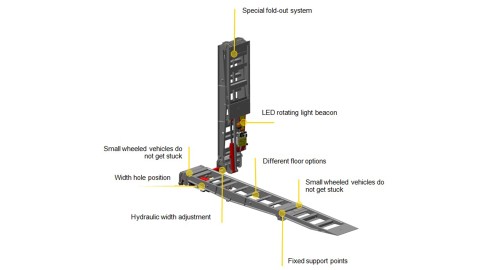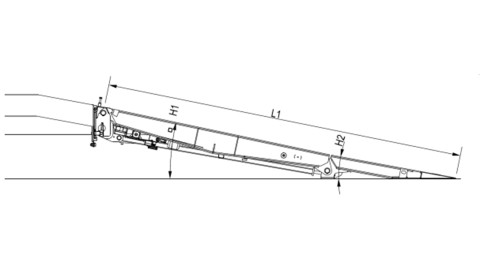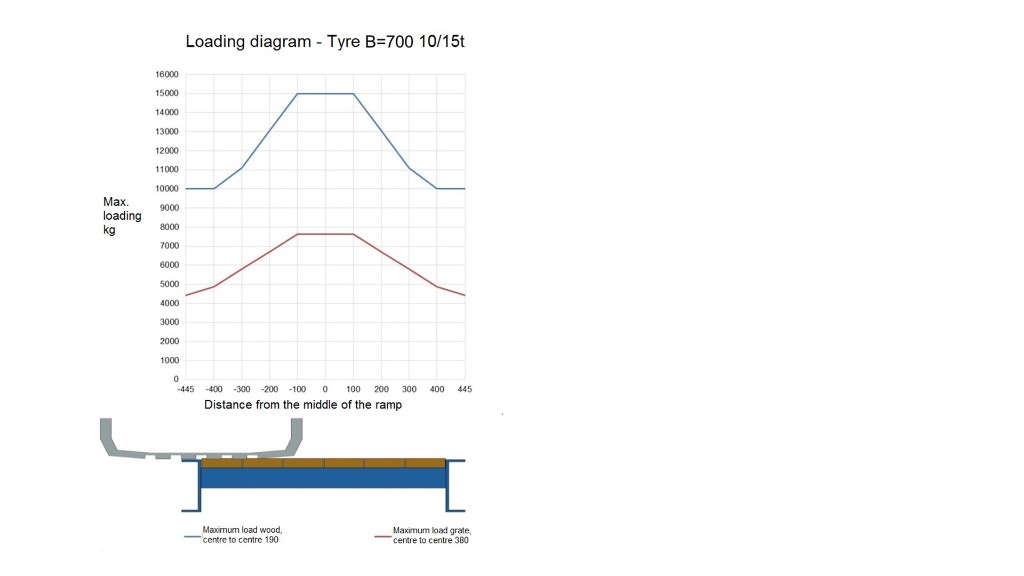Ask us
your question!
What you should to consider when purchasing ramps
Ramps are often simply included in the purchase of a trailer. But these ramps are one of the most essential parts of the trailer. They determine what cargo you can and, more importantly, what cargo you cannot transport. For this reason, we have improved the range of ramps especially for you to enable you to use the trailer as optimally as possible.
This further development revolved around safety for the user, and we did not make any concessions to quality.
Products
A survey among users showed that the following four ramps are used the most. We took a close look at these four types to improve them. With the result below. The different variants are available with both grate and hardwood floor.
Highlights
As shown below, we have improved a few essential points of the ramps. For instance, the ramps are designed with a special fold-out system. This mechanism keeps the point of the ramp free from the ground when unfolding.
This avoids causing damage to the road or your ramps. Various special strips are also fastened to prevent small wheeled vehicles getting stuck. An optional dock shelter support foot is available to facilitate loading and unloading at a loading dock.
Beavertail
Once you have chosen a ramp, you also have to choose a chamfered rear of the trailer. This prepares the trailer for a ramp. We offer three types of chamfered rears in our new range. Look under the heading ramp angle for the slope angle per beavertail in combination with the chosen ramp.

Ramp angle
As indicated below, the ramp can determine what cargo you can and cannot transport. Aside from the type of ramp, the combination of ramp and trailer is important. The diagram below shows what ramp angle belongs with the type of ramp and the type of trailer. Use this chart to help you determine what ramp is the best fit for you!

| Cargo bed height | Beavertail | Single ramp | Double ramp | Extra long (and extra wide) double ramp |
|---|---|---|---|---|
| L=3000 | L=4000 | L=5000 | ||
| Ramp angle | Ramp angle | Ramp angle | ||
| 800 mm (205 tires) | Short 600x8° | - | 9° | 7° |
| 800 mm (205 tires) | Short 600x12° | - | - | - |
| 800 mm (205 tires) | Long 850x8° | - | 9° | 7° |
| 880 mm (SL-semi low loader) | Short 600x8° | - | 11° | 9° |
| 880 mm (SL-semi low loader) | Short 600x12° | 13° | - | - |
| 880 mm (SL-semi low loader) | Long 850x8° | 13° | 11° | 8° |
| 900 mm (Air-sprung semi low loader) | Short 600x8° | - | 11° | 9° |
| 900 mm (Air-sprung semi low loader) | Short 600x12° | 14° | - | - |
| 900 mm (Air-sprung semi low loader) | Long 850x8° | 14° | 11° | 8° |
| 925 mm (Air-sprung semi low loader with hydraulic steering) | Short 600x8° | - | 12° | 9° |
| 925 mm (Air-sprung semi low loader with hydraulic steering) | Short 600x12° | 14° | 11° | - |
| 925 mm (Air-sprung semi low loader with hydraulic steering) | Long 850x8° | 14° | 11° | 9° |
| 950 mm (Air-sprung semi low loader with hydraulic steering double extendable) | Short 600x8° | - | 13° | 10° |
| 950 mm (Air-sprung semi low loader with hydraulic steering double extendable) | Short 600x12° | 15° | 12° | - |
| 950 mm (Air-sprung semi low loader with hydraulic steering double extendable) | Long 850x8° | 15° | 12° | 9° |
Loading diagram
The cargo that the ramps can handle is essential for the right choice. We calculate for every type of ramp what the maximum loading capacity is with a wooden floor and a metal grate floor. The load capacity is also dependant on the track gauge of the vehicle being loaded.
Below you will find an example.
Maximum axle load at normal ramp width (890 mm)
Wide tyre - normal strength ramps
(Tyre width=700 10/15 t)


